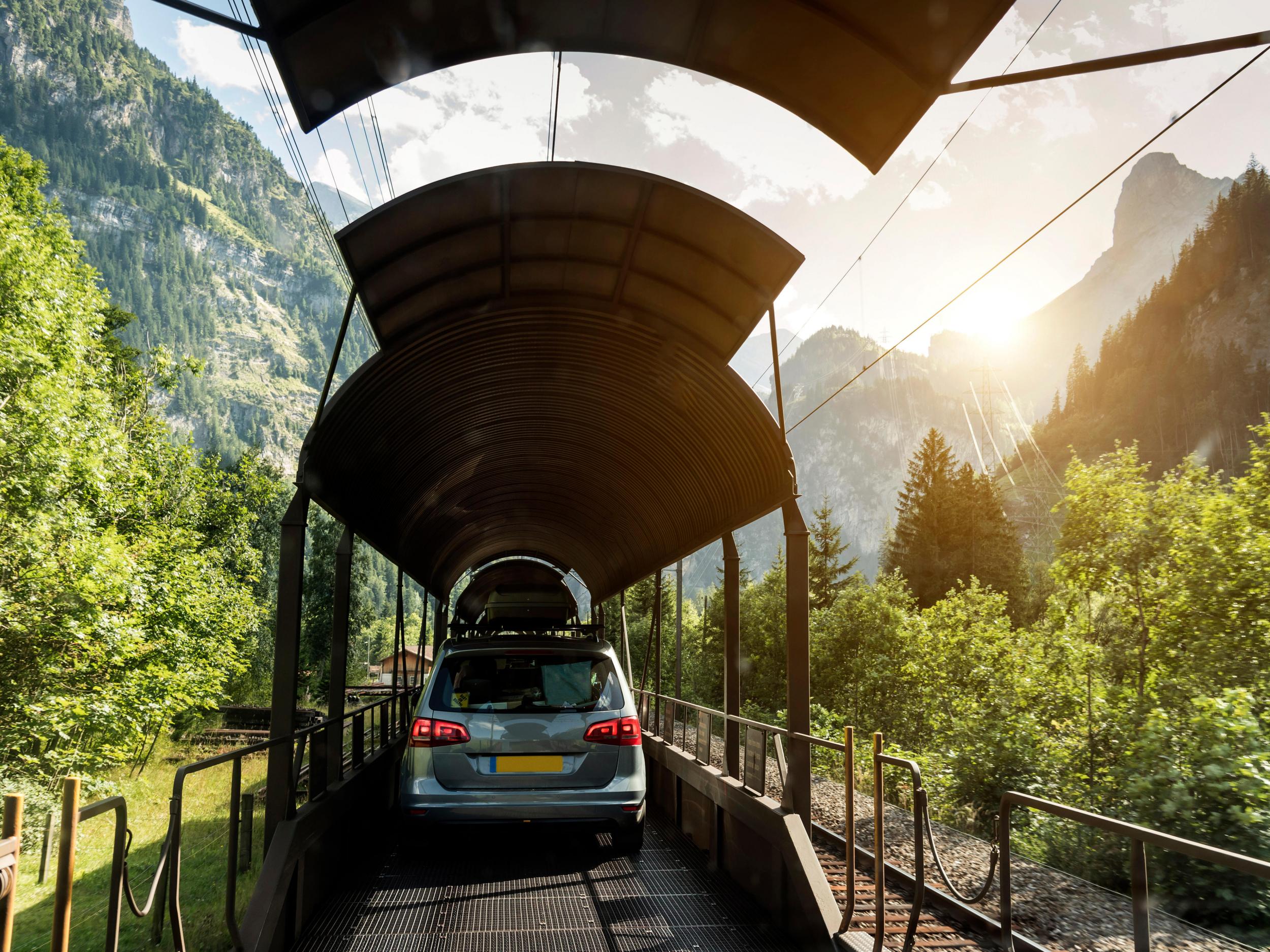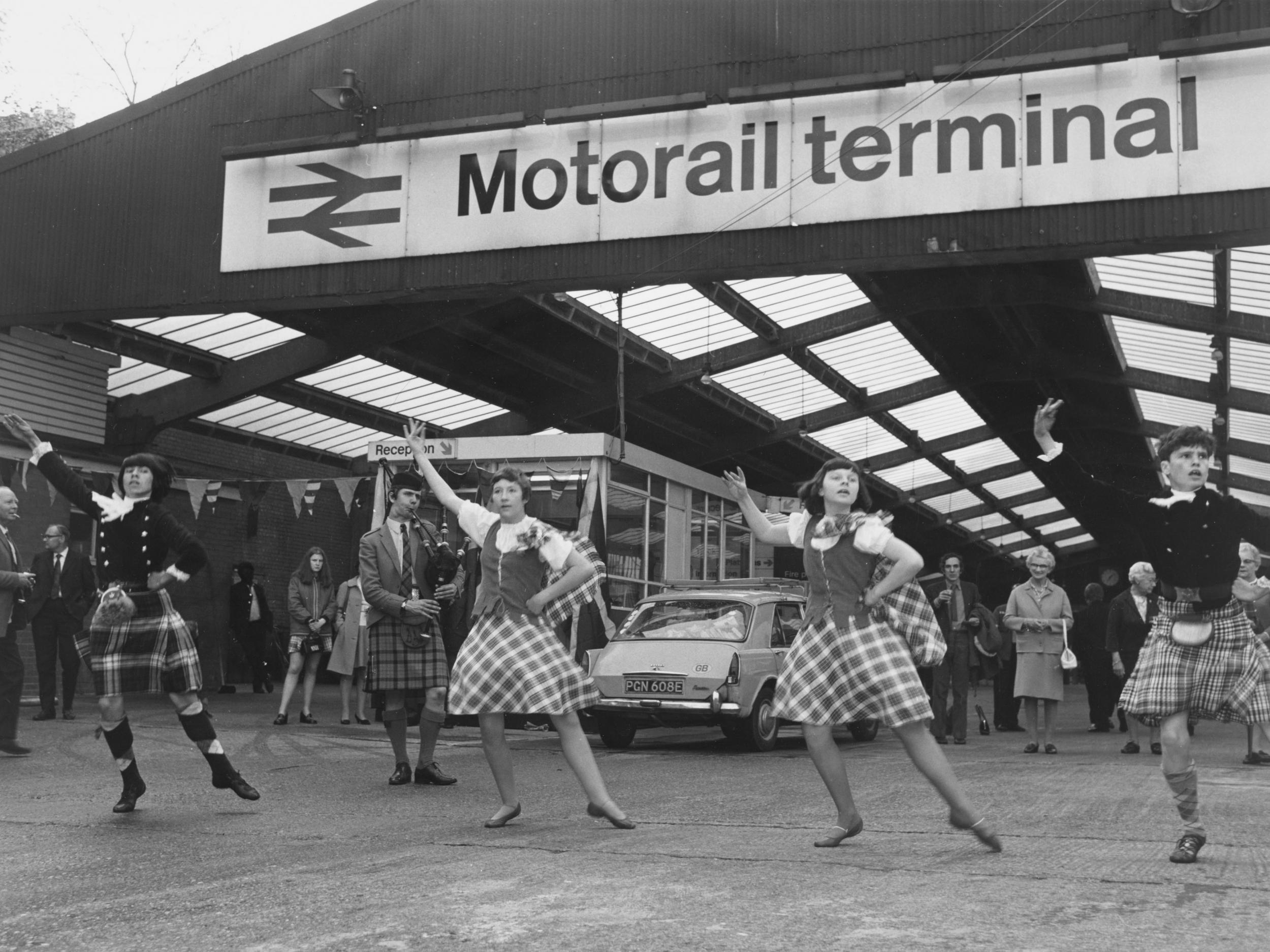When trains takes the strain: Why the UK needs a Motorail comeback
Many Brits would love the chance to avoid hiring a car on holiday, so why does Motorail only exist overseas?

Your support helps us to tell the story
From reproductive rights to climate change to Big Tech, The Independent is on the ground when the story is developing. Whether it's investigating the financials of Elon Musk's pro-Trump PAC or producing our latest documentary, 'The A Word', which shines a light on the American women fighting for reproductive rights, we know how important it is to parse out the facts from the messaging.
At such a critical moment in US history, we need reporters on the ground. Your donation allows us to keep sending journalists to speak to both sides of the story.
The Independent is trusted by Americans across the entire political spectrum. And unlike many other quality news outlets, we choose not to lock Americans out of our reporting and analysis with paywalls. We believe quality journalism should be available to everyone, paid for by those who can afford it.
Your support makes all the difference.Ever since the car was invented, drivers have harboured two ambitions: the ability to install a bed or lounger in their vehicle, and being met at the end of their public transport journey by a car for the next leg of their journey.
Taxis fulfil that crucial meet and greet function – as do hire cars, limousines, hearses, courtesy cars and, paradoxically, one’s own car relocated, ready to be reunited on the other side.
For 30 years, from 1966 to 1995, British Rail offered a Motorail franchise to and from some of its farthest intercity destinations. Drivers and passengers seated in the front of a train, the car pulled along behind – albeit in a carriage not quite so well appointed.
There were isolated motoring-onto-rail experiments before and after this period. From 1924 until 1966, Great Western carried cars and drivers from Bristol to South Wales via the Severn Tunnel, but the opening of the first Severn Bridge halted its efforts. From the summer of 1955 onwards, a car sleeper ran from London to Perth. A service was resurrected in 1999 – only this time, from Paddington to Penzance – but this only ran to autumn 2005.
With the arrival of Motorail came the technology to mass transport cars safely. The technology is fully interchangeable with the commercial import and export of brand new cars destined for the showroom. Hence ports like Felixstowe and Immingham entertaining so many car movements, many years after the late Dr Richard Beeching returned to Imperial Chemical Industires (ICI).
Rootes, a venerable company originally based in Maidstone – developed and built the totemic Cartic-4 rail trailer. Designed to hold 30 private cars, it usually housed 28 on each of four interlinked double deck wagons, spanning a total length of 200 feet. Cartics were efficiently loaded using a series of ramps and flaps, each flap dropping into place upon the approach of an oncoming car axis.
After British Rail shunted Motorail into a siding, Cartics – still bearing that distinctive “Rail Blue” livery, reverted to serving dealerships. And the last remaining Cartic-4 was exiled to the scrap yard in 2008, becoming obsolete.
What went wrong for Motorail? After all, its rationale, “letting the train take the strain”, was so logical. Any family could break up from school or work on a July Friday afternoon, drive to their nearest Motorail access that evening, and be in the Cornish Riviera, Carlisle, or Fort William, ready to continue their journey at dawn. No need to hire a vehicle for their holidays, with no requirement to keep reloading tightly crammed boots or interiors. Fewer fractious children moaned: “Are we there yet?”
Moreover, anybody living in the capital had the advantage of a Motorail departure point close by: Kensington Olympia Station, near Earl’s Court and Hammersmith.
One contributing factor to the experiment’s decline was expense. Relatively high costs were placed on the customer, with a correspondingly high cost for the railways providing such a specialised service for only five months of each year.
Another factor spelling Motorail doom was the advent of the better car. State-of-the-art design initiated by visionaries such as Alec Issigonis with synchronised gears, front-wheel drive, radial tyres and air-conditioning revolutionised the market. Thus, in the 1970s and 80s, long-distance motoring became a lot more enjoyable on better roads. It became easy to lap up 300 miles between lunch and dinner thanks to the addition of the M4, M5 and M6 to the motorway network.
Added to that, the families who were most likely to use Motorail were being tempted by the first package holidays to the Spanish Costas, Majorca, Tenerife and northern Italy. Why risk the British climate and some rather grudging boarding house hospitality when you could hop on a Monarch, British Caledonian or Dan-Air flight and be done with the UK sights?
The last nail in the coffin was John Major’s privatisation of the railways. Continuing Motorail into the late 1990s would have crossed too many franchise boundaries, involved too much co-ordination and led to needless litigation.

Overseas, the Motorail concept still survives. When most national or state railways at the turn of the millennium despaired at accompanied cars whose occupants might need overnight stewarding and on-board restaurants, private point-to-point operators stepped in with revived auto-carrier, auto-train, and auto-zug services.
Only France’s indomitable SNCF appears to have kept the faith. Even then, the French model is for cars to be separately transported by rail just before or just after the TGVs carrying their drivers and passengers. Vehicle reclaim therefore happens soon after disembarkation, and from an adjacent depot.
One widely unforeseen Son-of-Motorail came with Margaret Thatcher opting for rail tracks – under the English Channel, to supplement and compete with car ferries. That surprise infrastructure project encouraged Eurotunnel to institute its popular le Shuttle.
Naturally, shuttle trains – popular in Switzerland, where railways are the only viable way to reach the other side of treacherous mountain passes – differ from true Motorail, while still allowing travellers to stay close to their cars and caravans.
Modern stainless steel le Shuttle wagons, loaded and unloaded at Folkestone in Kent, or Sangatte on the Calais side of the channel, can be over half a mile in length. It is forbidden to stand behind a vehicle. Instead, frequent patrols ensure anybody wishing to get out for the toilet or a snack stands to the side. In recent years, so aware of the fire hazard, Eurotunnel introduced totally enclosed stock.
In the current climate, there is arguably room to reintroduce Motorail to the British mainland. Its sheer convenience would fit in well with cash-rich, time-poor business and leisure travel. With so many people talking about autonomous robotic cars – the Googles, Ubers and Teslas, it would be foolish to forget such a crucial, innovative driverless experiment.
There is absolutely no need for a weary driver to be stuck in some horrendous traffic jam, working against the clock, when that driver’s vehicle can effortlessly join them at an astonishing 125 miles per hour on the train. Ignition off, cruise control demobilised, fraying no nerves, causing no harm.
Join our commenting forum
Join thought-provoking conversations, follow other Independent readers and see their replies
Comments